- News
- Reviews
- Bikes
- Components
- Bar tape & grips
- Bottom brackets
- Brake & gear cables
- Brake & STI levers
- Brake pads & spares
- Brakes
- Cassettes & freewheels
- Chains
- Chainsets & chainrings
- Derailleurs - front
- Derailleurs - rear
- Forks
- Gear levers & shifters
- Groupsets
- Handlebars & extensions
- Headsets
- Hubs
- Inner tubes
- Pedals
- Quick releases & skewers
- Saddles
- Seatposts
- Stems
- Wheels
- Tyres
- Tubeless valves
- Accessories
- Accessories - misc
- Computer mounts
- Bags
- Bar ends
- Bike bags & cases
- Bottle cages
- Bottles
- Cameras
- Car racks
- Child seats
- Computers
- Glasses
- GPS units
- Helmets
- Lights - front
- Lights - rear
- Lights - sets
- Locks
- Mirrors
- Mudguards
- Racks
- Pumps & CO2 inflators
- Puncture kits
- Reflectives
- Smart watches
- Stands and racks
- Trailers
- Clothing
- Health, fitness and nutrition
- Tools and workshop
- Miscellaneous
- Buyers Guides
- Features
- Forum
- Recommends
- Podcast
feature
How to stop your chain coming off! Top tips for a trouble-free ride
Unshipping your chain can be annoying at best, sometimes dangerous, especially if it happens when you’re in traffic, so you need to minimise the chances of it happening by setting up your bike right.
If your chain has started to come off frequently when it didn’t in the past, something in your bike setup has changed. The first thing to do is check that all of your drivetrain bolts are tight, that nothing has moved or got whacked, and to make sure your rear wheel is correctly seated in the dropouts.
Let's take a look at how you deal with other possible reasons your chain is coming off.
If your chain comes off at the front
Adjusting your front derailleur limit screws
If your chain is coming off the chainset, make sure that the two limit screws on your front derailleur are properly adjusted.
One of the screws – sometimes, but not always, marked H for ‘high’ – limits movement of the front derailleur cage outwards.
The other screw – sometimes, but not always, marked L for ‘low’ – limits movement of the front derailleur cage inwards.
If your chain regularly comes off the inside of your chainset, it could be that the L screw needs adjusting. Put the chain on the small chainring and the largest sprocket at the back. The inner plate of the front derailleur cage should nearly but not quite touch the chain; we’re talking about a gap of 1-2mm. If the gap is larger than that, turn the L screw clockwise to move the inner plate of the front derailleur cage closer to the chain.
If your chain frequently comes off the outside of your chainset, it could be that your front derailleur H screw needs adjusting. Put the chain on the big chainring (up front) and the smallest sprocket (at the back). The outside plate of the front derailleur cage shouldn’t quite touch the chain. If there’s a gap larger than 1-2mm, turn the H screw clockwise and you’ll see the cage move inwards.
>>Read more: How to adjust front derailleur indexing
Other solutions
You can still occasionally unship your chain even if the limit screws are set correctly, particularly if you change gear under load (while standing or pushing hard on the pedals). Try backing off your effort (but still pedalling) when shifting between chainrings.
Another way to keep the chain from coming off the inside of the chainset is to use a chain catcher.
A chain catcher is essentially an arm that acts as a barrier to the chain overshifting inwards. Some front derailleurs have an integrated chain catcher.
If your bike doesn’t already have one, you can fit a chain catcher retrospectively. There are different designs out there and they’re all pretty easy to install.
>> Read more: The rise of the chain catcher (no, really!)
If your chain comes off at the rear
Adjusting your rear derailleur limit screws
If your chain is coming off at the rear, it’s often a simple matter of adjusting the limit screws on your rear derailleur.
If the chain is coming off the inside of the cassette, put the chain onto the smaller chainring (at the front) and the largest sprocket (at the rear). Then turn the L screw clockwise until you see the rear derailleur cage (the section that hangs down) start to move away from the centre of the bike. You need to move it to the point where the chain can move freely into the largest sprocket, but can go no further than that.
If your chain is coming off the outside of the cassette, put the chain onto the larger chainring and the smallest rear sprocket. Then turn the H screw clockwise until you see the rear derailleur cage start to move towards the centre of the bike. You need to move it to the point where the chain can move freely into the smallest sprocket, but can go no further than that.
Again, though, if the chain wasn’t coming off before but has recently developed the habit, the setup has somehow changed. Before you do anything, check that the rear wheel is sitting correctly in the dropouts with the rim running centrally in the chainstays, and make sure that the rear derailleur and its hanger (the piece to which the rear derailleur is bolted) aren’t bent. In most cases, the rear derailleur pulleys should be lined up directly underneath one another.
>>Read more: How to adjust and tune indexed rear derailleurs
Use the stabiliser system (if you have one)
Many mountain and gravel bike rear derailleurs have stabiliser systems designed to keep the chain on over rough ground. Essentially, they minimise unnecessary derailleur arm movement and chain bounce.
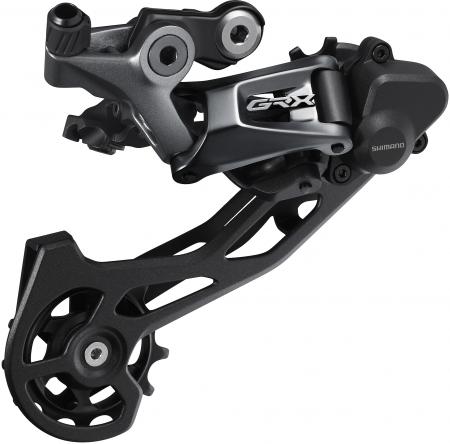
If you have a rear derailleur of this kind and your chain often jumps off, find the stabiliser system on/off switch and make sure it's in the 'on' position to increase the tension. The location varies between brands but it's always easy to find.
What if your chain is still coming off?
If you do all this and your chain is still coming off, there are several other things to look at:
• Your front derailleur could have moved. Check that it is positioned correctly by taking a look at our article on how to index front gears.
• Is your drivetrain worn and in need of replacement? Shifting performance can start to become less smooth and more erratic as components near the end of their useful lives.
• It might be that the chain is worn, has a stiff or bent link, or has become clogged up with dirt. A visual inspection while turning the cranks should reveal if there’s a problem here.
• The chainring, or a chainring tooth, could be bent. Again, a visual check will tell you what you need to know.
• It could be that you’re running the chain at too extreme an angle – in the larger chainring and the largest sprocket (as in the picture above), or the smaller chainring and the smallest sprocket. Some systems can handle this (even though it's not a particularly efficient way to ride), some can’t.
• Your chain could be too long or too short. Before putting a chain on, thread it onto the larger chainring and the largest sprocket but don’t run it through the rear derailleur. Pull the two ends together and add one complete link (one inner and one outer half link) to get the correct chain length.
• You’re running a chain that’s not compatible with the rest of your drivetrain, in which case you need to change it.
• Your drivetrain isn't clean. Mud and gunk can affect your drivetrain performance more than you might realise. You need the derailleurs and chain running free and unobstructed.
There are plenty of other reasons why your chain could come off, but we think these are the main ones. If you think there’s an important cause we’ve missed, tell us about it down below.
Mat has been in cycling media since 1996, on titles including BikeRadar, Total Bike, Total Mountain Bike, What Mountain Bike and Mountain Biking UK, and he has been editor of 220 Triathlon and Cycling Plus. Mat has been road.cc technical editor for over a decade, testing bikes, fettling the latest kit, and trying out the most up-to-the-minute clothing. He has won his category in Ironman UK 70.3 and finished on the podium in both marathons he has run. Mat is a Cambridge graduate who did a post-grad in magazine journalism, and he is a winner of the Cycling Media Award for Specialist Online Writer. Now over 50, he's riding road and gravel bikes most days for fun and fitness rather than training for competitions.
Latest Comments
- don simon fbpe 19 min 53 sec ago
Such wise words from a head on such young shoulders.
- leedorney 1 hour 36 min ago
That's just the right size for a cycle route... BUT NO the car has to shine
- HarrogateSpa 1 hour 43 min ago
Ok but that is of marginal if any relevance to this case.
- KDee 2 hours 49 min ago
I'm still running an ELMNT BOLT V1, and I've never really understood the LED's. I'm sure I configured them for HR zones, but never really look at...
- chrisonabike 2 hours 51 min ago
Mostly agree. Although ... high level sport is complicated. It's not wrestling exactly, but there sometimes seems to be more than a little...
- David9694 3 hours 56 min ago
It just seems a lot of trouble to go, doesn't it. If you are into building stuff like this perhaps some system where the vehicle brings you to...
- don simon fbpe 4 hours 14 min ago
Why is this not the will of god?
- hawkinspeter 7 hours 18 min ago
PKD foresaw it, though his novel was based on a different outcome of WWII, not the precursor to WWIII. Maybe the Idiocracy film is a closer fit?
- OnYerBike 9 hours 20 min ago
@Sredlums: I'm not sure I follow your logic. If someone grabs your helmet twists it, then the reason it doesn't feel good is because the outer is...
- Rapha Nadal 9 hours 20 min ago
Coming to the mid-paced Saturday club ride soon.
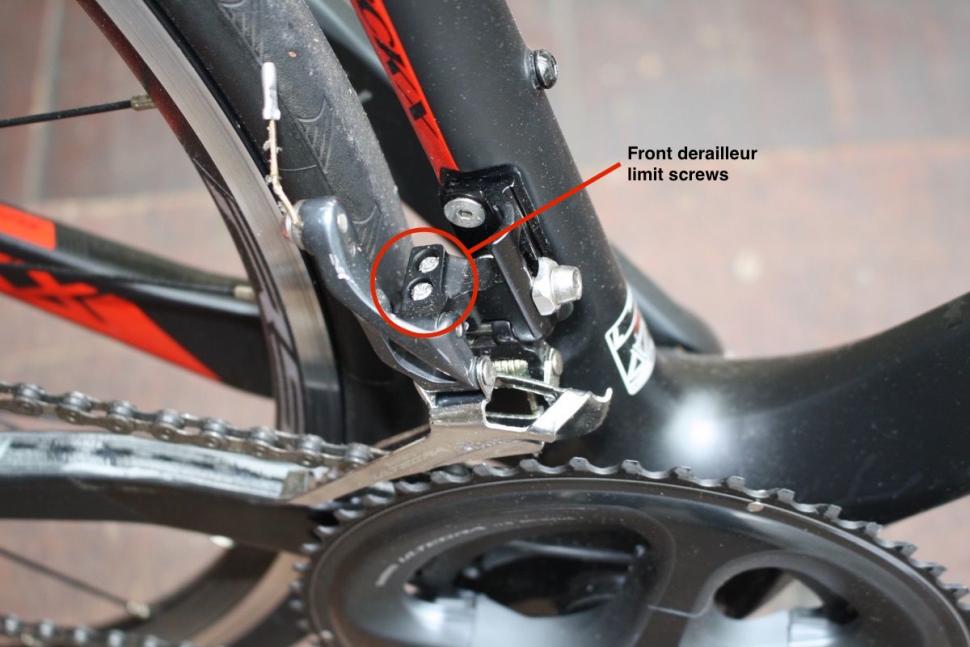
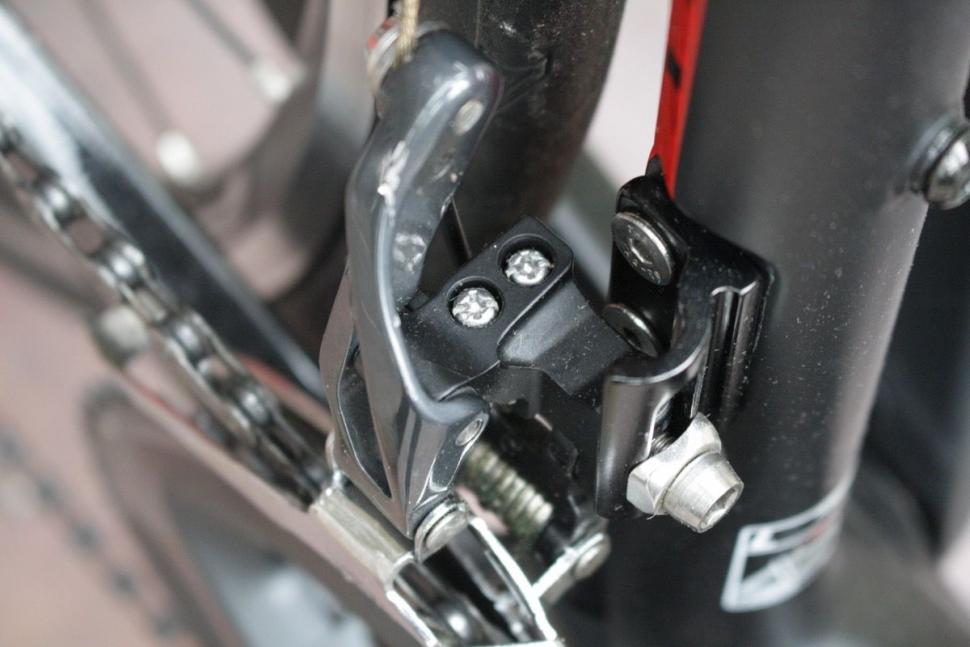


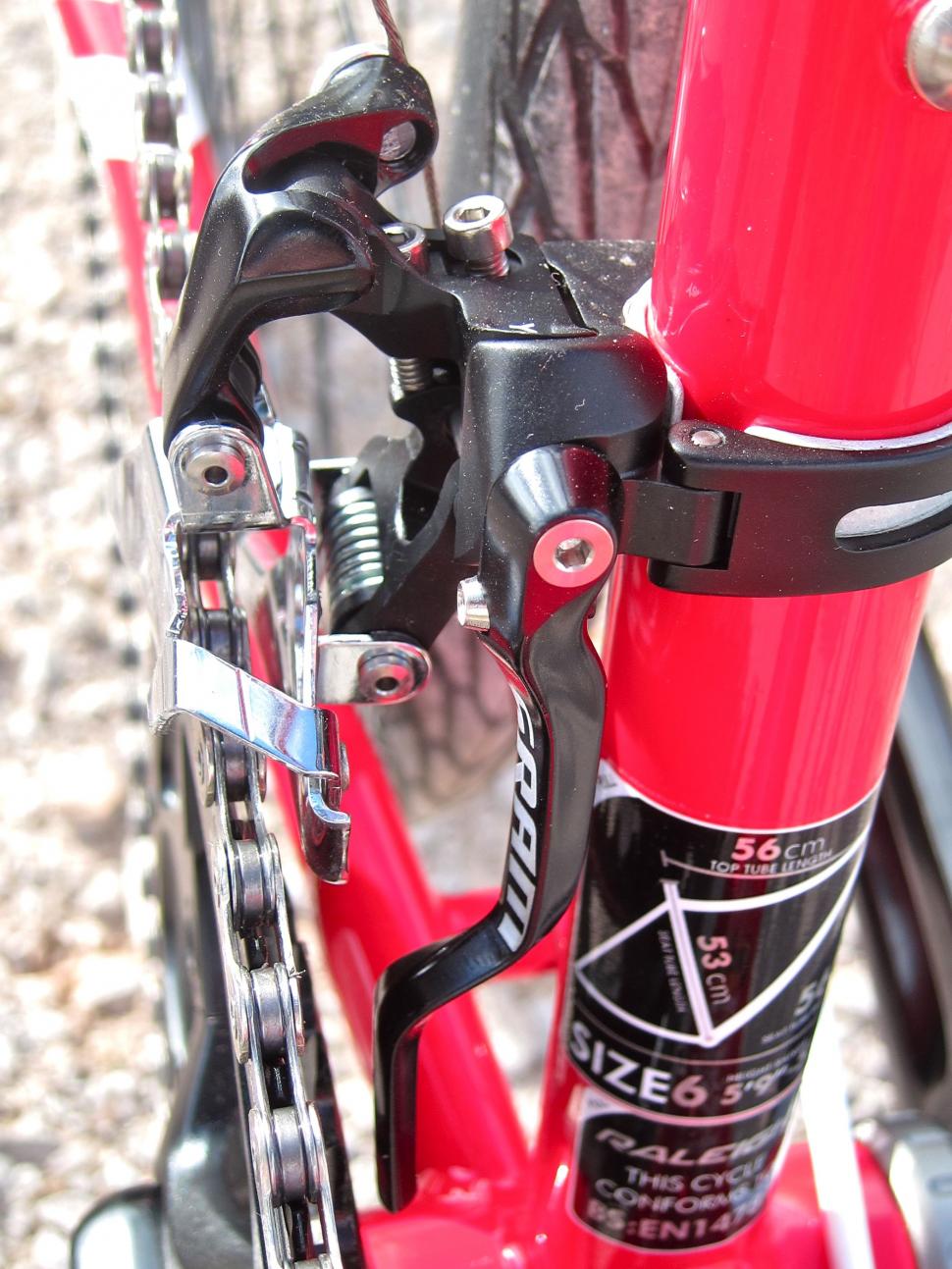
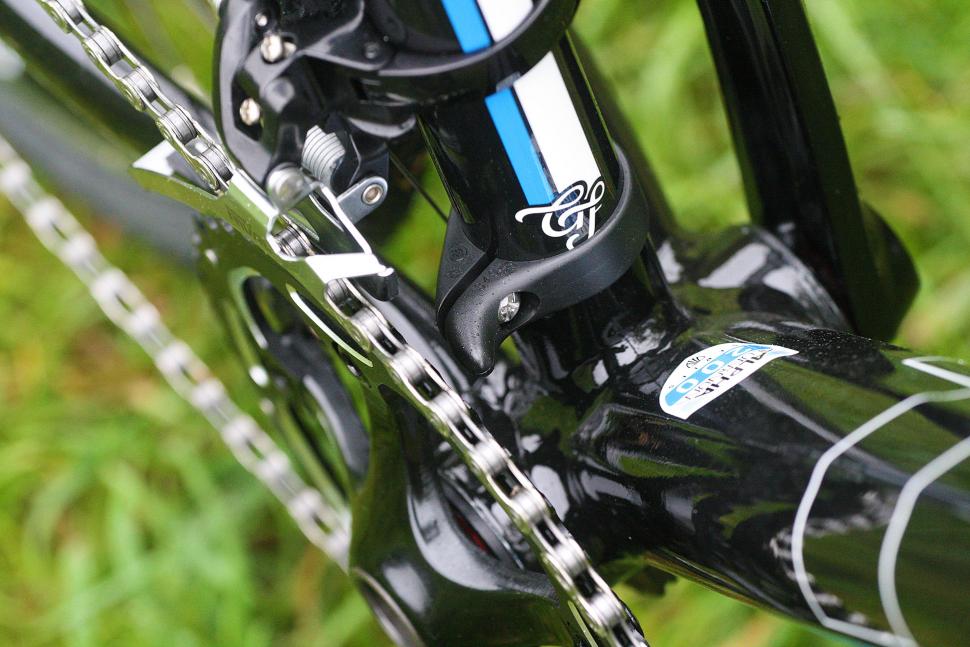
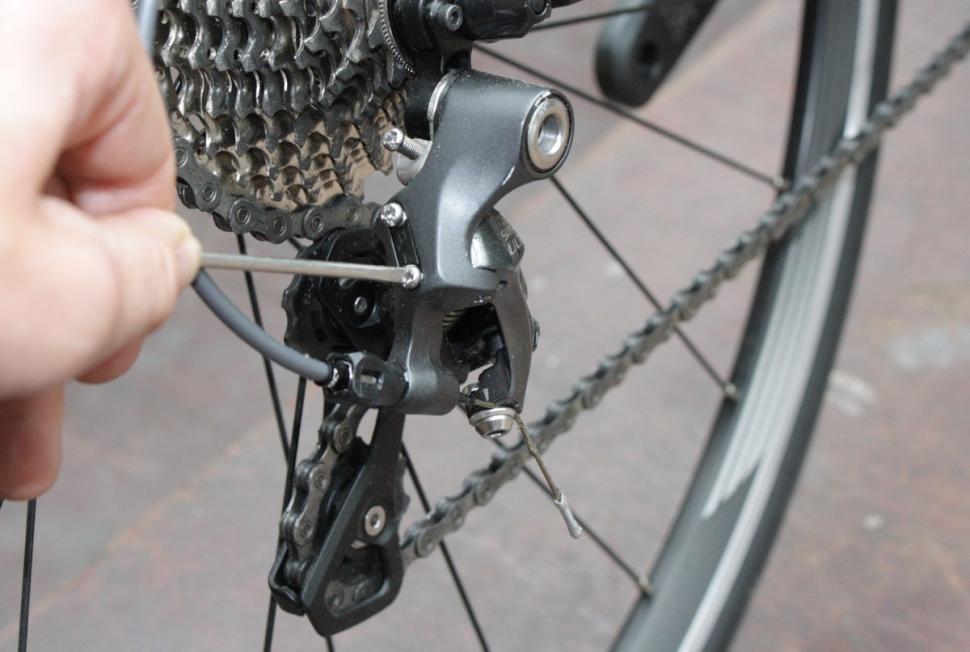


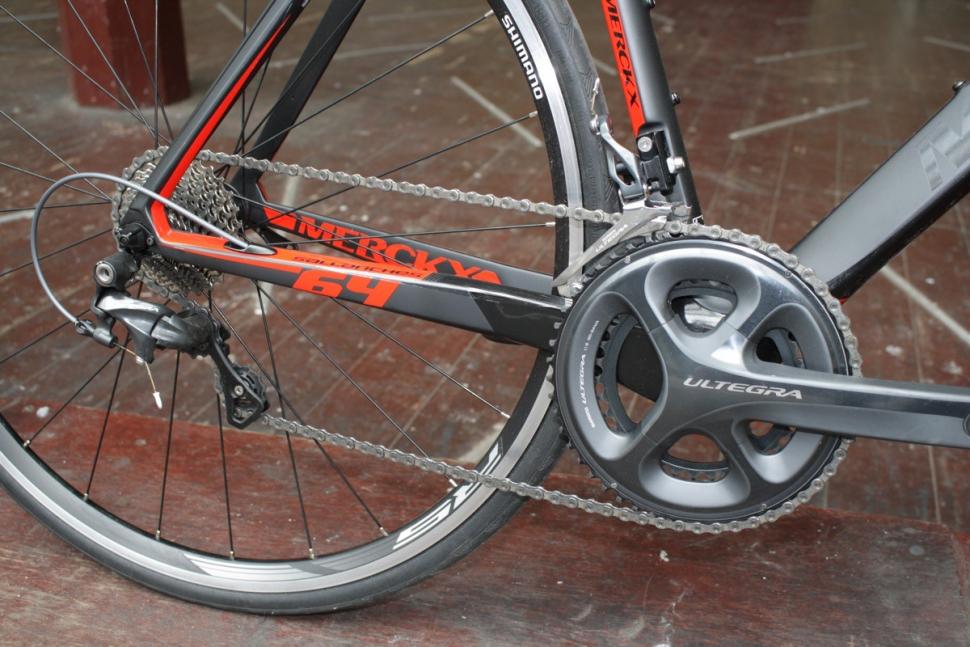
Add new comment
17 comments
Bent rear mech hanger will cause the chain to drop off. Even if the adjustment screws are set correctly the chain will still come off because the mech has moved. You should probably check for this before adjusting any screws. If the hanger is bent then adjusting the screws will never solve the problem and you will have to adjust them again once you have straightend the hanger. Other symptoms are skipping sprockets and shifting under load.
May I suggest buying a JIS 2 driver for adjusting shimano limit screws. Will also adjust shimano brake spring tension. Fits the heads perfectly.
How can I stop my chain coming off?
Stop yanking it!
How about:
Take it to your local bike shop and get it checked over!
Sure fire way to wreck your bike is to muck with limit screws when you don't know what you are doing. What if your hanger is bent and you adjust the rear dearalier inwards - bam - into the wheel and a new wheel, mech, hanger and chain.
Disclaimer: I work in a bike shop. we warn people off playing with limit screws.
Go fixed. As long as the wheelnuts are tight, the chain tension and chainline are fine, you'll never unship the chain again. Ever.
You are right but if you are lazy and the chain is a bit slack because of stretch, it can fly off if you are spinning at 130+rpm. Done it twice and felt stupid both times.
yeah. I got the chainline wrong once and broke the chain at 30mph plus. That was *interesting*. And I had a chain that said 1/8" on the box but appears not to have been. It unshipped on the fast downhill just out of my street. Stayed upright both times but became beyond anally retentive about chain line, tension and fit...
Somewhat related: Your rear derailleur might need an overhaul.
Lately I've had odd chain slippage problems because the P-knuckle spring on my 105 5700 GS (medium cage) rear derailleur isn't keeping chain tension as well as it should, especially when using smaller cogs with the small ring. This sudden chain slackness and "sliding" can feel like chain drop but isn't quite as catastrophic...it does interrupt the predictability of your power transfer to the rear wheel though.
One temporary fix is to tighten the B-tension screw more to force the cage away from your cassette and increase chain tension. The other is to disassemble the rear derailleur cage and P-knuckle spring, clean it out, and then realign the relevant pins on the spring with the holes on the P-knuckle before reapplying grease and reassembly. On 105 derailleurs there is a second pin hole for the P-knuckle spring that will yield even more spring tension on the cage when used.
https://www.youtube.com/watch?v=1sZS49JmXK0
Get a Shadow plus clutch rear derailleur
+ 1 on ALL NoOneSpecials list.. a caveat to 13 however, they are not all overweight, But they think in BM terms..and equate expensive machines as the fast way to speed, forgetting that most of the newbie or pilgrims as i call them still have 1.1 engines, and most of all.. when i worked with BM's they were advertised as drivers cars, ime 95% of their owners or drivers couldn't drive a nail into a bar of soap..but as someone who works with race bikes for clubmen and poseurs everything on the list is dead right, the ones i love the most are the new teck heads who google probs go and watch a Utube video and never having had a tool in their hand ever.... instantly know all about setting up race bikes.. on the stand a machine may work perfectly when there isn't any weight or load on the frame or chain ..whole different scene out on the road sometimes..
My father, never a man to be troubled by his deficiencies, would often say that bigotry was just another word for experience. When I was twenty I thought he was a reactionary old goat; many years later I see that he indeed had a point.
Oh, I dunno, if anything I'd suggest that bigots are lacking the experience to become well-rounded individuals from the ones I've encountered...
Seriously?!!! Is this 'article' a piss take?
FFS, you forgot to mention.......
1) F/mech height.
2) F/mech angle.
3) Play in cranks/worn B/B.
4) Ten ton of shite from the back tyre clogging up the pivot bushings.
5) Worn out chainrings.
6) No idea what the 'trim' function is on Shimano STI.
7) Problems with Shimano 10 speed cable issues under bartape.
8) Shimano's pain in the arse f/mech cable angle setup.
9) Internal gear routing.
10) Ten ton of crap inside the STI/Ergo/Double-Tap shifters.
11) Bike bought in a box and put together by an idiot who plays around with a screwdriver.
12) Bent hanger obviously.
13) Riding like a twat as you are overweight and have too much money and have no idea about gears. But hey, a 6K bike is fashion.
Do I need to go on.........
Please do not publish crap advice for Joe Public. Plugs are fitted to all electrical goods these days, in the days they weren't.......
But hey, what do I know,
NoOneSpecial.
All useful considerations (if a bit impolite).
Other than 13 onwards. Which is just bigotry. Shame.
[/quote]
All useful considerations (if a bit impolite).
Other than 13 onwards. Which is just bigotry. Shame.
[/quote]
Although you may say the same about BMW drivers. Is that bigotry as well?
Good read.
Would just add... if your chain regularly comes off/grinds/crunches on the hills it may well be poor technique - definately so in my case. Don't try changing down when you're out of the saddle, especially if on some 15% killer - this places enormous stress on the whole chain drive. Anticipate in advance (while still seated) and aim for a smooth transition through the gears.